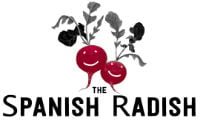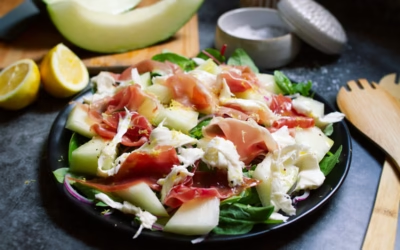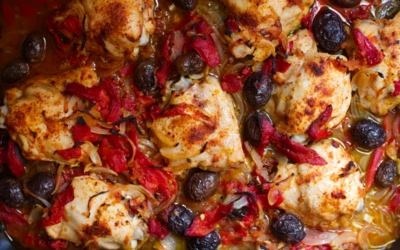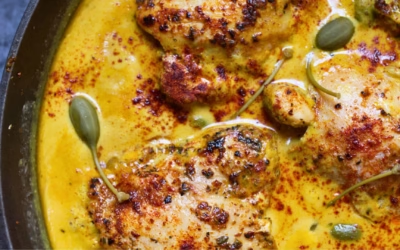Castilla-La Mancha
Regional Foodie Guide
– Castile-La Mancha –
Castilla-La Mancha is located in the middle of the Iberian Peninsular lies a region with rich umber-colored soil that glistens in the hazy afternoon sun. Castilla-La Mancha is home to a rich culinary history, dotted with many unique inland towns and cities that are scattered throughout the inland plateaus and stunning snow-capped mountain ranges.
From the hanging houses of Cuenca to the stunning former capital of Spain, Toledo, all are an homage to the region’s embrace of simple and hearty cuisine, shaped in part by their neighboring regions, and also in part influenced by a strong agricultural and pastoral origin.
Cuisine of Castilla-La Mancha
The cuisine of Castilla-La Mancha is best described as simple yet hearty, with many underrated dishes lying await for the would-be foodie at heart. The region’s access to fresh ingredients and distinct specialty exports such as manchego cheese, saffron, garlic, and honey has created a fascinating palette of flavors to explore in the dishes of the region.
Castilla-La Mancha is skirted by mountainous regions on all sides, and a vast central plateau offers opportune land for farming. Meat and game dishes are popular in the region, with dishes such as Carcamusas (typically from Toledo), Caldereta from La Mancha easily found throughout.
Climate and geography of Castilla-La Mancha
With such an expansive and undulating landscape, the region enjoys a mild, dry Mediterranean climate throughout and lends well to agricultural activities such as growing wheat, grapes, and olives. The provinces of Cuenca and Albacete are also the largest producer of garlic in Spain, and the overwhelming majority of Spain’s saffron and black truffle production is also from the region.
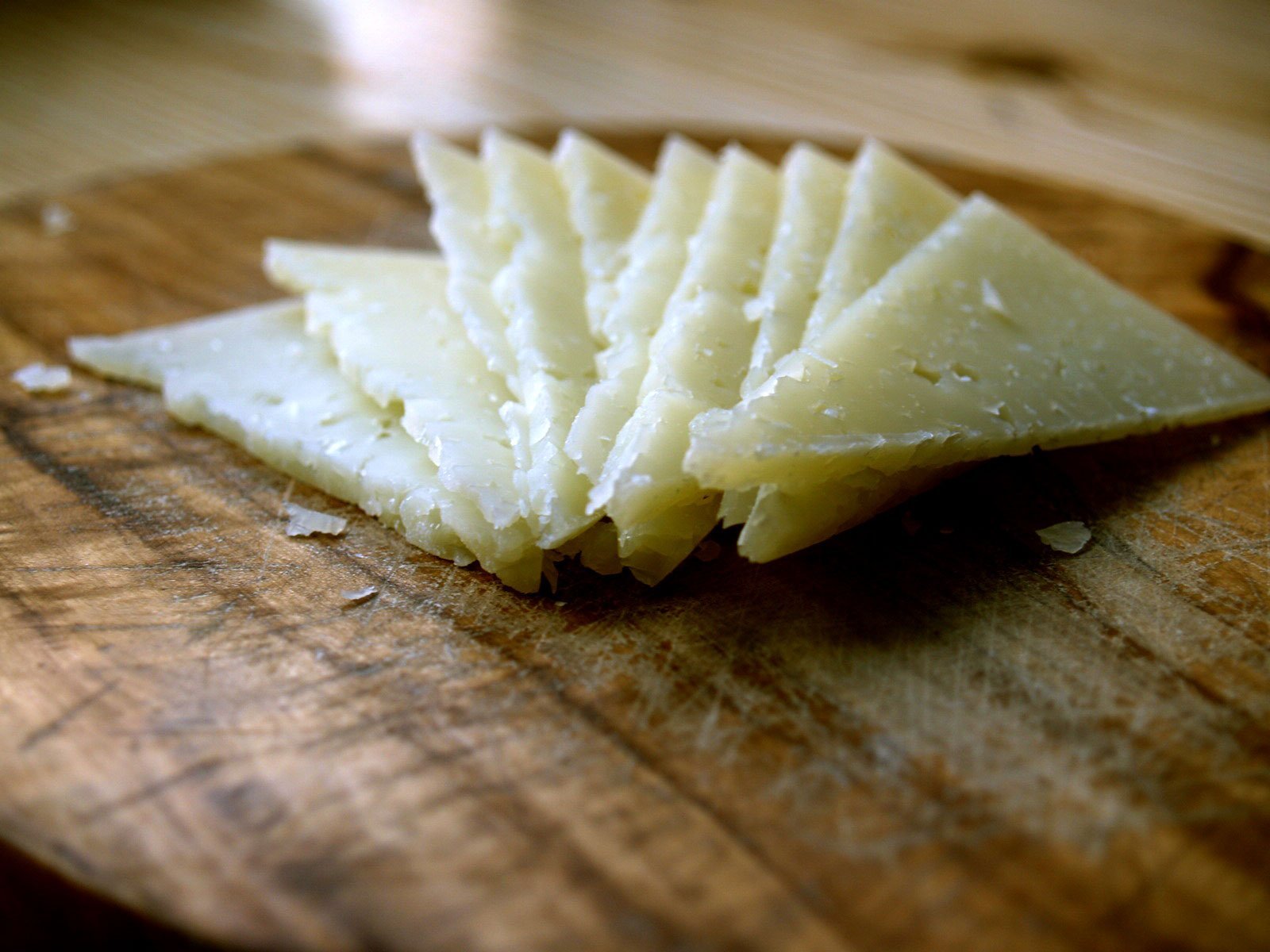
Manchego – The King of Spanish Cheese
Dairy products are also of excellent quality throughout Castilla-La Mancha and manchego cheese, which is made with milk from the protected Manchego sheep, is a dominating export all over the world. You’ll find the cheese on cheese boards all over Spain, but in its native region, you’ll find it mixed in dishes with spectacular results.
One popular tapas dish is a crumbed and fried manchego cheese that is often served with a glass of good red wine from the region.
Cheeses from Castilla-La Mancha:
- Manchego viejo – This cheese is made from sheep’s milk and it ages from a year to two years in natural caves. It has a firm texture and crumbles easily, with a strong, complex flavor with a slight peppery kick.
- Manchego fresco – typically bone-white in color, the cheese is aged around 2 weeks and has flavors that are buttery, fresh, mild, and milky.
- La Leyenda – Ages for 1 year, the cheese is rubbed with olive oil and herbs, then soaked in brandy or sherry for a week prior to the aging period.
- Manchego semicurado – Aged from 3 weeks to 4 months. It has a semi-firm texture and flavors are somewhat milder than the curado variety.
- Manchego curado – Aged for 3-6 months. The texture is semi-firm, smooth, and creamy. The flavors are mild, pleasant, sweet, nutty, caramel-like, and slightly piquant.
- Queso Manchego (Artesano) – Made from raw or pasteurized ewe’s milk of the Manchego breed that graze freely on the pastures in the provinces of Albacete, Ciudad Real, Cuenca, and Toledo. The cheese’s color ranges from pale yellow to greenish-black, and the flavor is slightly acidic, but depending on the aging period, it can also be spicy and peppery.
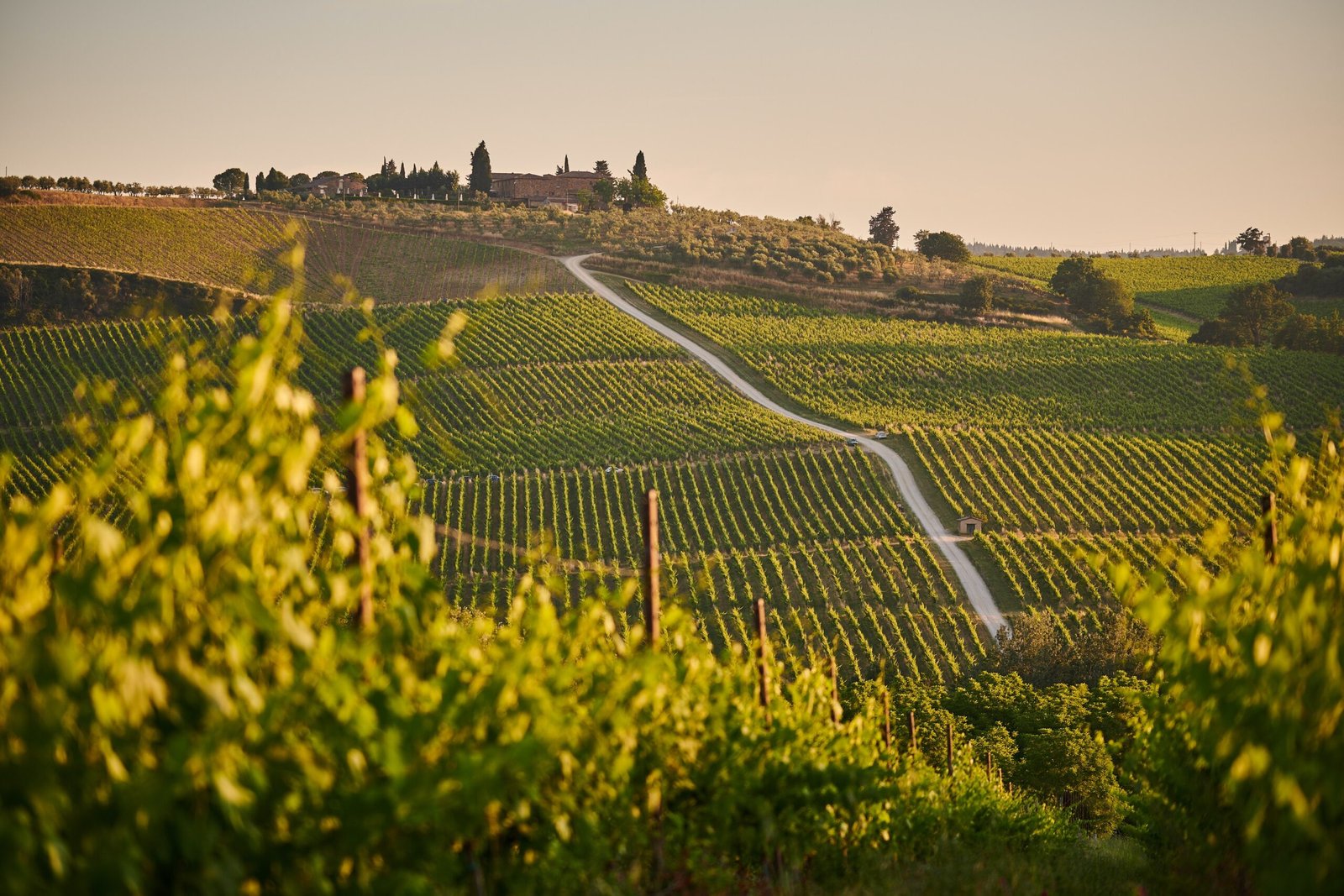
The Largest Wineries in the World
Castilla-La Mancha also has the most registered vineyards in all of Spain hosting over 250 wineries with many of epic proportions earning the region the title of “La bodega de Europa”. La Mancha is a designation of origin (DO) for wines and includes the provinces of Toledo, Albacete, Cuenca, and Ciudad Real.
In the rich and diverse wine-growing region, Airén is the most widely planted grape variety, with dominant red grape varieties including Tempranillo, Cabernet Sauvignon, Petit Verdot, Garnacha, Garnacha Tintorera, Monastrell, Syrah, and Bobal. Red wine production has expanded in recent years, with two-thirds of all the wine made in the region being red wine.
Honey Production in Castilla-La Mancha
Honey is a featured ingredient in many traditional dishes, with many areas producing excellent quality honey. The world-famous La Alcarria honey from the provinces of Guadalajara and Cuenca stands out, mainly thanks to the abundance of aromatic plants such as rosemary and lavender, earning it the first honey apicultural (appellation of origin) established in Spain.
The La Alcarria honey is multi-flower honey made from the nectar of rosemary and lavender flowers. It has subtle fruity and floral aromas with pleasant balsamic notes. The honey’s color varies from almost completely transparent to a light amber coloration, depending on its floral origin.

Traditional Dishes of Castilla-La Mancha
- Carcamusas (typical of Toledo )
- Caldereta from La Mancha
- Tojunto (‘all together’)
- Cochifrito
- Hen in pepitoria
- Salpicón
- Gachas (Toledo) – Ancient Iberian flour-based staple food, main ingredients are flour, water, olive oil, garlic, paprika, and salt. The dish is generally eaten directly out of the pan it was cooked in, using either a spoon or a simple slice of bread.
- Gazpacho manchegos – Spanish stew made with game meat stock, mushrooms, rabbit, chicken, onions, garlic, red peppers, and unleavened bread known as torta de gazpacho.
- Perdiz escabechada – A combination of partridges, onions, carrots, garlic, white wine vinegar, dry white wine, olive oil, pimentón or paprika, bay leaves, thyme, salt, and black peppercorns.
- Sopa de ajo – Traditonal Spanish soup served with fresh parsley and croutons that are left to soak in the piping hot soup.
- Pisto – Similar to French Ratatouille, made with a variety of cooked and fried vegetables such as tomatoes, onions, bell peppers, and courgettes (zucchini).
- Arroz de ayuno – A traditonal rich dish made with peas, bell peppers, artichokes, salt cod, tomatoes, garlic, lemon, olive oil, and salt.
- Atascaburras – From Albacete, south east region of Castilla-La Mancha. The dish is made with a mixture of mashed potatoes, garlic, cod, olive oil, boiled eggs, walnuts, parsley, salt, and pepper.
- Mojete manchego – A salad made with roasted bell peppers, garlic, small onions, olive oil, black olives, cumin, and lemon juice.
Want to go to Castilla-La Mancha for dinner tonight?
Drinks of Castilla-La Mancha
- Resolí (Cuenca) – A coffee liqueur with other ingredients including typical brandy, anise-flavored spirits, cinnamon, citrus zest, and cloves.
- Airén White wines.
- Viña Albali Gran Reserva – A fine red aged over 5 years in oak barrels.
- R.V. Ruiz Villanueva – A fine young red aged 2 years.
Desserts of Castilla-La Mancha
- Alajú – Traditional Spanish dessert made with a dough of almonds, spices, boiled honey, and toasted breadcrumbs that’s sandwiched between two wafers. (Found in the province of Cuenca).
- Marquesas – A traditional Spanish cookie found in Sonseca, Toledo, that is usually enjoyed during the festive season.
- La Mancha Flowers – A sugary donut.
- Miguelitos are a type of cream-filled puff pastry from the La Roda provincial zone.
Other notable products of Castilla-La Mancha
- Hams in Tarancón
- Honey jars in Pastrana
- Winery in Manzanares
- Las Pedroñeras garlic
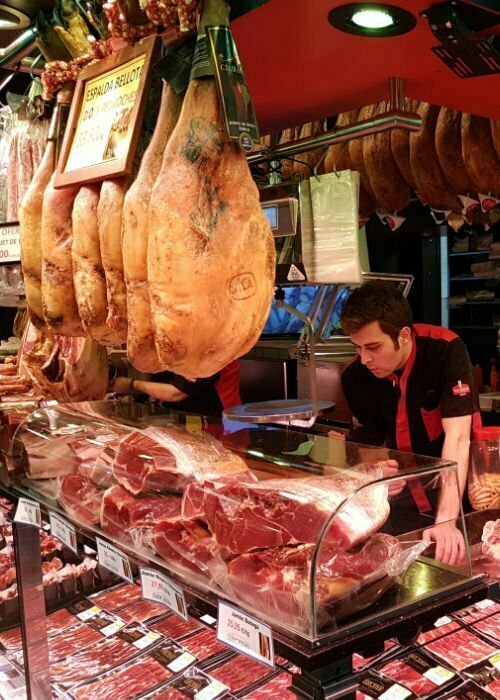
The Mediterranean Diet –
It’s no secret that the Mediterranean diet is healthy. It has been proven in numerous studies from all corners of the world, it aids weight loss, reduces the risk of heart disease and type 2 diabetes, as well as a growing list of other health benefits.
Find out what’s most exciting about the diet and create some incredibly tasty and simple Spanish recipes.
Summer Salad with Melon, Mozzarella, and Serrano Ham – Ensalada de Verano con Melón & Jamón
Summer Salad with Melon, Mozzarella, and Serrano Ham Ensalada de Verano con Melón & Jamón Nothing captures the essence of summer quite like a vibrant, refreshing salad—and this Summer Salad with Melon and Serrano Ham...
Spanish Chicken Thighs with Roasted Peppers and Olives
Spanish Chicken Thighs with Roasted Peppers and Olives An Easy-To-Make, Flavor-Packed Classic That Brings Spain to Your Table A mouthwatering recipe for those busy weeknight dinners: Spanish Chicken Thighs with Roasted Peppers...
Spanish Chicken in Creamy Mustard Sauce – Pollo a la Mostaza
Spanish Chicken in Creamy Mustard Sauce - Pollo a la Mostaza An Easy, Flavor-Packed Classic That Brings Spain to Your Table When it comes to rustic, comforting Spanish cuisine, Pollo a la Mostaza — chicken in creamy mustard...
